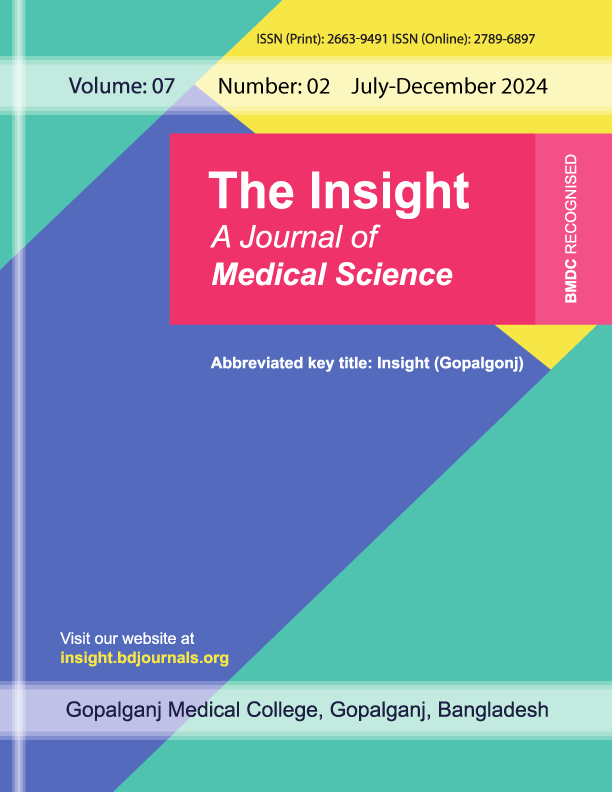Publiée 2025-07-07
Mots-clés
- Multiple-Pregnancy,
- Singleton-Pregnancy,
- Maternal-Outcomes,
- Neonatal-Outcomes
(c) Copyright The Insight 2025

Ce travail est disponible sous la licence Creative Commons Attribution 4.0 International .
Comment citer
Résumé
Background: Multiple pregnancies are known to carry higher risks of maternal and neonatal complications compared to singleton pregnancies. Understanding these differences is crucial for improving care and outcomes. The study aimed to compare maternal and neonatal outcomes between multiple and singleton pregnancies. Methods & Materials: This hospital-based comparative observational study was conducted over a period of one and a half years, from July 2023 to December 2024, at the Department of Obstetrics and Gynecology, Enam Medical College and Hospital, Savar, Dhaka, Bangladesh. A total of 100 pregnant women (50 singleton and 50 multiple pregnancies) were enrolled. Data on demographic characteristics, antenatal care, pregnancy complications, delivery mode, maternal outcomes, neonatal birth outcomes, breastfeeding initiation, and NICU admissions were collected and analyzed. Results: A total of 100 pregnant women (50 singleton, 50 multiple pregnancies) were studied. Maternal age was similar between groups (p > 0.05). Multiple pregnancies had significantly lower gestational age (29.11 vs. 35.15 weeks), lower birth weight (2.04 vs. 2.65 kg), and higher rates of very low birth weight (26.0% vs. 2.0%) and preterm delivery (86.5% vs. 50.0%) (p < 0.05 for all). Second neonate APGAR scores were significantly lower in multiples, while first neonate scores were similar. Breastfeeding initiation was higher in singletons (86.0% vs. 64.0%; p < 0.05). Antenatal, postpartum complications and cesarean rates showed no significant differences. Conclusion: Multiple pregnancies present increased risks of adverse maternal and neonatal outcomes compared to singleton pregnancies, necessitating enhanced antenatal surveillance and specialized care.



